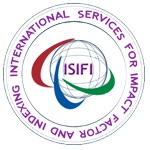Using Automated Contact Tracing System App with QR Code to monitor and safeguard Parishioners against COVID-19 at St. Anthony of Padua Parish, Subic, Zambales
Pdf : 18 Views Download
Citation: Dr. Froilan D. Mobo, Ana Liza R. Garcia â€Using Automated Contact Tracing System App with QR Code to monitor and safeguard Parishioners against COVID-19 at St. Anthony of Padua Parish, Subic, Zambalesâ€. American Research Journal of Computer Science and Information Technology, vol 4, no. 1, 2020, pp. 1-4.
Copyright Froilan D. Mobo. This is an open access article distributed under the Creative Commons Attribution License, which permits unrestricted use, distribution, and reproduction in any medium, provided the original work is properly cited.
Abstract:
KEYWORDS: QR Code, Contract Tracing System, COVID-19, St. Anthony of Padua Parish
Description:
Introduction
St. Anthony of Padua Parish is situated in the heart of Barangay, Matain, Subic, Zambales, which are near the White Rock Beach Resort Hotel headed by Rev. Father Arwin Ebueng Ysonza which is under the umbrella of the Diocese of Iba, Zambales headed by the Most Reverend Bishop Bartolome G. Santos, JR. DD. It consists of 9 Barangays which has a population of more than 10,000 approximately, as per the Inter-Agency Task Force (IATF) on COVID-19 resolutions mass gatherings are allowed on 50% capacity which is stipulated under the Modified General Community Quarantine (MGCQ) in which there is a safety measurement protocol followed like the implementation of contact tracing form, getting the temperature per parishioner and observance to Social Distancing. However, with the implementation of these quarantine protocols, there is a problem that arises because the churchgoers can finish the accomplishment of contact tracing form in 30 minutes and half of the Mass celebration was already missed. In line with this, the researcher is proposing a system that can ease up the situation by Using an Automated Contact Tracing System Mobile App with QR
Code that can finish the transactions in a much faster approach by generating a QR Code and scan it, these transactions can
process in a matter of less than minutes.
The future method can help people take the vivacious decision of when to seek out relaxing support by allowing them to know whether they are already in the list of unprotected persons, (Rahman, Khan, Khandaker, & Salan, 2020). Possible research directions for next-generation mobile app design could facilitate the improved tracing and security performance and as well as wide adoption by the population per area, (Ahmed et al.,
2020). By the Enhancement and Customization of this new system, it will follow the quarantine protocol, which is set by the Local Inter-Agency Task Force (IATF) on Covid-19 of Subic, Zambales like proper social distancing when entering and leaving the church and recording their names, temperature, and location can be diligently implemented properly and a lot of paper works will be saved because it can generate a quick one-time real-time report that can be exported into an excel form and sent through the e-mails using the Mobile App that scans and generates QR Code per Parishioners. Using a smartphone technology is a powerful tool that may be engaged to boundary the disease transmission during a pandemic; it also present significant privacy concerns regarding the collection of personal data such as location using QR Code, (Yasaka1 et al.). Automated contact tracing has been proposed as a way to supplement manual contact tracing and lends itself to widely multiplied devices such as cell phones and wearable,(Hatke et al., 2020). A number of questions that could address when assessing the ethical challenges of mobile applications
for automated contact-tracing of COVID-19, (L. Bengtsson, Eysenbach, M. Hildebrandt, M. Salathe, & M. Salathé, 2020).
Methodology:
The Researchers have conducted data gathering using Focus Group Discussion and survey questionnaire dated September 21, 2020, and presented to the respondents the functionality of the said enhanced system that is capable of solving the current pandemic problem and there are 25 Officers from the Parish Pastoral Council who have attended and was held at the PPC Hall of St. Anthony of Padua Parish, Subic, Zambales, Philippines. 28 respondents were able to respond during the pilot testing of the enhanced system which is composed of men and women ranging from 18 to 70 years old. A descriptive research design will be used for this type of problem and frequency-based statistical treatment will be employed.
Results:
The result shows that the following are:
Profile of the variables:
Discussions:
It was perceived that the Automated Contact Tracing System with QR Code can accurately get the attendance of those parishioners who are attending the Daily and Sunday masses and it will prevent from contacting the attendance checker and will prevent from COVID-19 virus.
Conclusions:
In conclusion the implementation of the Automated Contact Tracing System with QR Code Will be beneficial to the Parishioners because it may trace and log their attendance quickly and will generate an excel form report.
Recommendations:
Further studies will be done in the enhancement and Customized of the Automated Contact Tracing System with QR Code.
Acknowledgement:
I would like to thank the following persons who supported and help pursue this study namely:
• Reverend Father Arwin E. Ysonza, Parish Priest of St. Anthony of Padua, Subic
• Sister Avelinda Dizon, Catechist Coordinator of St. Anthony of Padua, Subic
• Brother Prince Calamaya, Youth and Altar Server Coordinator of St. Anthony of Padua
• Brother Gerald Quijonan, Parish Personnel of St. Anthony of Padua, Subic
• Brother Kenneth Froy Angelo Mobo, Altar Server of St. Anthony of Padua, Subic
References
Access, 8, 134577-134601. doi:10.1109/access.2020.3010226.
2. Hatke, G., Montanari, M., Appadwedula, S., Wentz, M., Meklenburg, J.,Ivers, L., . . . Fiore, P. (2020, July 07). Using Bluetooth Low Energy (BLE)
Signal Strength Estimation to Facilitate Contact Tracing for COVID-19. Retrieved September 06, 2020, from https://arxiv.org/abs/2006.15711
3. L. Bengtsson, X., Eysenbach, G., M. Hildebrandt, L., M. Salathe, S., & M. Salathé, L. (2020, January 01). COVID-19 and Contact Tracing Apps: Ethical Challenges for a Social Experiment on a Global Scale. Retrieved September 05, 2020, from https://link.springer.com/article/10.1007/
s11673-020-10016-9
4. Rahman, M., Khan, R., Khandaker, M., & Salan, M. (2020, July 06). An Automated Contact Tracing Approach for Controlling Covid-19 Spread
Based on Geolocation Data from Mobile Cellular Networks. Retrieved September 06, 2020, from https://arxiv.org/abs/2007.02661
5. Yasaka1, T., Lehrich2, B., Sahyouni2, R., 1Department of Otolaryngology– Head and Neck Surgery, Yasaka, C., Author, C., . . . Authors..., L. (n.d.).
Peer-to-Peer Contact Tracing: Ciustomized of a Privacy-Preserving Smartphone App. Retrieved September 06, 2020, from https://mhealth.
jmir.org/2020/4/e18936/



















